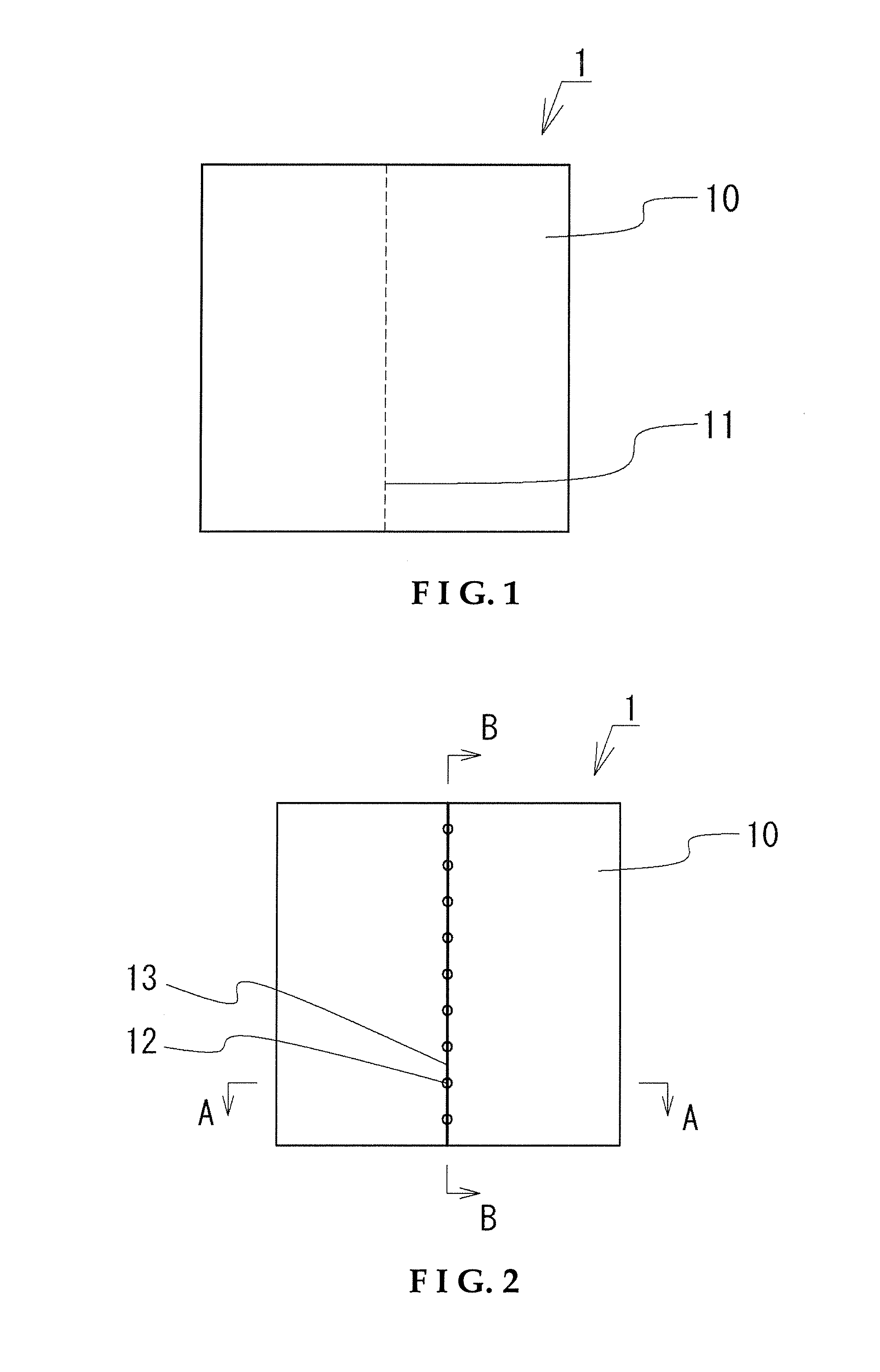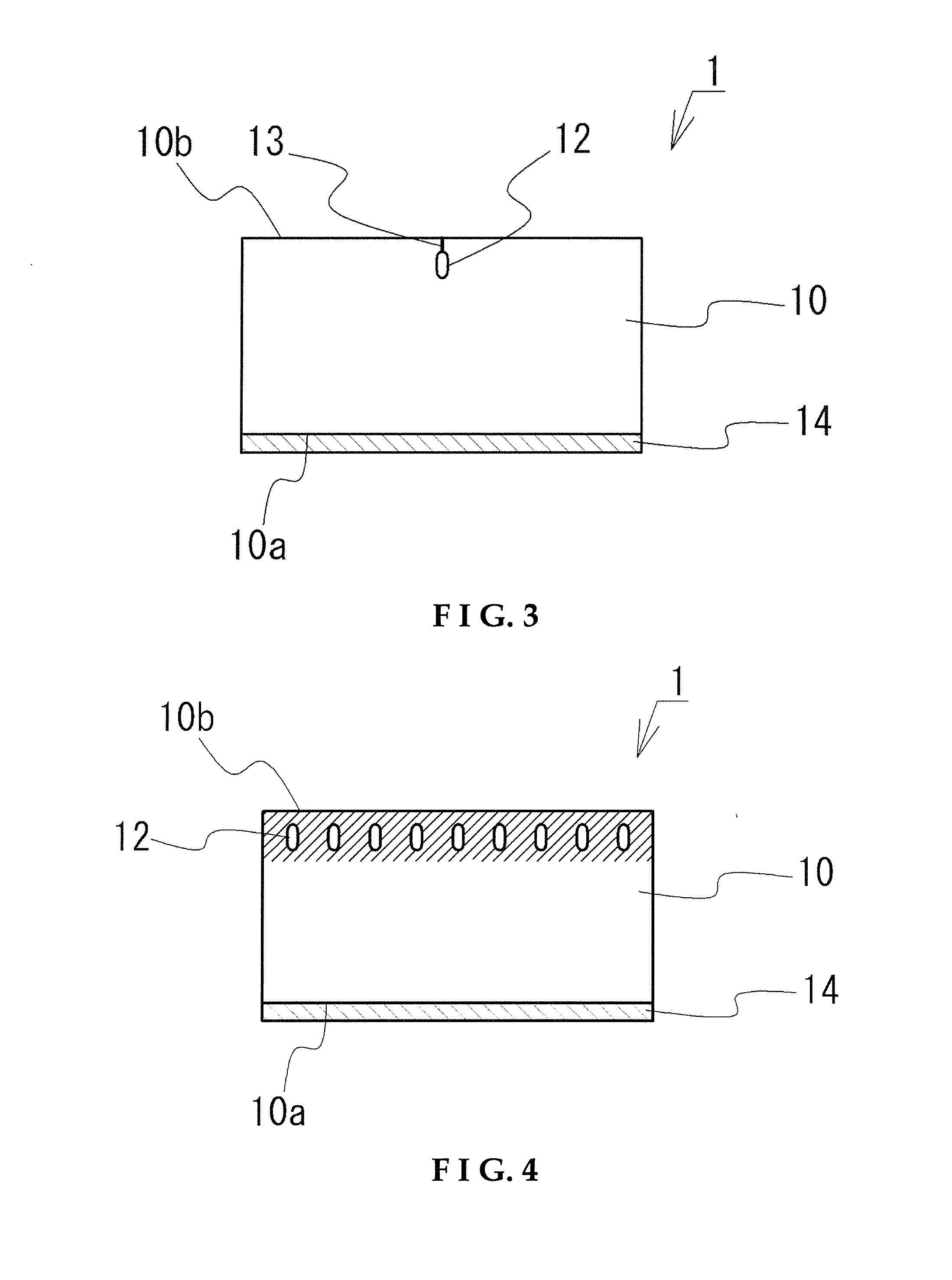Method for manufacturing semiconductor element
a semiconductor element and manufacturing method technology, applied in the direction of manufacturing tools, metal working equipment, welding/soldering/cutting articles, etc., can solve the problems of difficult control of the direction in which the crack runs, the laser beam may sometimes be focused on the outside of the substrate, and the cracks are difficult to control. the effect of accurate splitting along the processed portions
- Summary
- Abstract
- Description
- Claims
- Application Information
AI Technical Summary
Benefits of technology
Problems solved by technology
Method used
Image
Examples
example 1
[0070]A wafer was prepared in which a GaN-based semiconductor layer was formed on one main face of a sapphire substrate with a thickness of approximately 85 μm. The semiconductor layer was produced by laminating an n-type semiconductor layer, a light emitting layer, and a p-type semiconductor layer in that order, starting from the sapphire substrate side, on the (0001) plane of the sapphire substrate.
[0071]After this, part of the light emitting layer and p-type semiconductor layer are removed to expose the n-type semiconductor layer, and an n electrode is formed on the n-type semiconductor layer surface, and a p electrode on the p-type semiconductor layer surface.
[0072]To obtain a substantially square element measuring approximately 250 μm on one side, the intended dividing lines of the wafer were set in two directions, one substantially parallel and one substantially perpendicular to the a axis of the sapphire substrate, and a pulsed laser beam was directed along each of the intend...
example 2
[0076]In this example, semiconductor elements are manufactured in the same manner as in Example 1, except that the distance between the focal positions of the laser beam is set to approximately 5 μm in irradiation with the laser beam along an intended dividing line substantially parallel to the a axis.
[0077]After laser irradiation, the sapphire substrate surface is observed, which confirmed the presence of substantially circular processed portions and a fissure extending from the processed portions, and confirmed that at least part of the fissure ran so as to link the processed portions on the substrate surface. After wafer division the semiconductor elements thus obtained are observed, which revealed that the element side faces is divided substantially perpendicular to the sapphire substrate surface.
[0078]The manufacturing method of the illustrated embodiments can be applied to elements that are made into elements by the division of a wafer having a substrate. It can be applied to ...
PUM
| Property | Measurement | Unit |
|---|---|---|
| Fraction | aaaaa | aaaaa |
| Fraction | aaaaa | aaaaa |
| Diameter | aaaaa | aaaaa |
Abstract
Description
Claims
Application Information
 Login to View More
Login to View More - R&D
- Intellectual Property
- Life Sciences
- Materials
- Tech Scout
- Unparalleled Data Quality
- Higher Quality Content
- 60% Fewer Hallucinations
Browse by: Latest US Patents, China's latest patents, Technical Efficacy Thesaurus, Application Domain, Technology Topic, Popular Technical Reports.
© 2025 PatSnap. All rights reserved.Legal|Privacy policy|Modern Slavery Act Transparency Statement|Sitemap|About US| Contact US: help@patsnap.com



